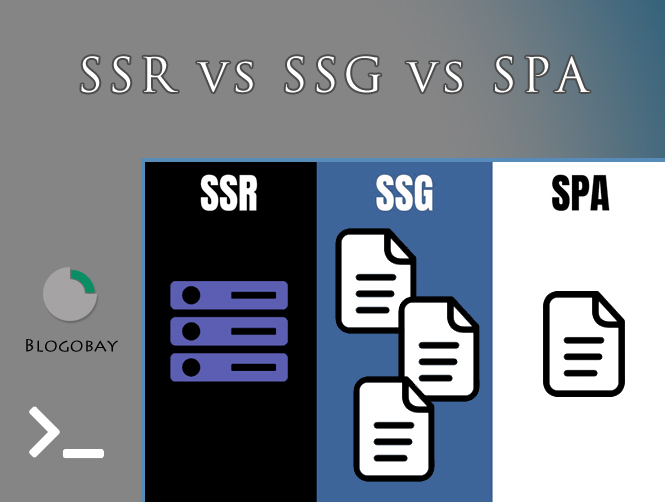Choosing the right approach for your Web App
In today’s dynamic web development landscape, selecting the optimal rendering approach for your application is crucial. This article delves into four prominent contenders: Server-Side Rendering (SSR), Static Site Generation (SSG), Single-Page Applications (SPAs), and Micro Frontends (MFEs), exploring their individual strengths, weaknesses, and ideal use cases to empower you to make an informed decision.
Server-Side Rendering (SSR): dynamic delivery with search engine love
Pros:
- Excellent SEO: Content is pre-rendered, readily available for search engines to index.
- Fast initial load: Users receive fully rendered HTML, reducing perceived loading time.
- Dynamic content: Supports data fetching and rendering on the server, enabling personalized experiences.
Cons:
- Increased server load: Rendering on the server can be resource-intensive for complex applications.
- Potential performance bottlenecks: Server response time directly impacts user experience.
- Limited interactivity: Subsequent user interactions might require additional server requests.
Ideal for: Content-heavy websites, e-commerce platforms, applications requiring SEO benefits.
Example: A news website delivering dynamically generated content with strong SEO aspirations.
References:
Static Site Generation (SSG): pre-rendered speed with content trade-offs
Pros:
- Blazing-fast loading: Pre-rendered static HTML ensures lightning-quick page loads.
- Minimal server resources: Reduces server load as pages are already built.
- Scalability: Handles high traffic efficiently due to minimal server-side processing.
Cons:
- Limited dynamic content: Content updates require rebuilding and redeploying the entire site.
- SEO challenges: Dynamic data and user interactions might hinder search engine indexing.
- Offline limitations: Content not available when offline without additional caching mechanisms.
Ideal for: Blogs, landing pages, marketing websites with static content and high performance needs.
Example: A portfolio website showcasing static content with minimal user interaction.
References:
- Nuxt: https://nuxtjs.org/docs/concepts/static-site-generation/
- Angular Universal: https://angular.io/guide/prerendering
Single-Page Applications (SPAs): immersive experiences with potential drawbacks
Pros:
- Fluid user experience: Single-page navigation creates a seamless and dynamic interaction experience.
- Offline functionality: Can cache data and function partially offline with proper setup.
- Rich interactivity: Enables complex UI elements and dynamic content manipulation.
Cons:
- Initial load penalty: Downloading and rendering JavaScript can lead to slower initial page loads.
- SEO hurdles: Search engines might have difficulty indexing dynamic content.
- Accessibility concerns: JavaScript-heavy nature can create accessibility challenges for some users.
Ideal for: Interactive web applications, dashboards, complex user interfaces with frequent updates.
Example: A social media platform offering real-time updates and user interactions.
Micro Frontends (MFEs): modular development with distributed complexity
Pros:
- Independent development: Teams can build and deploy features independently, promoting agility.
- Technology flexibility: Different microservices can use diverse technologies for optimal performance.
- Scalability: Can scale individual frontend components independently based on their needs.
Cons:
- Increased complexity: Requires robust communication and orchestration between MFE components.
- Potential performance overhead: Communication and data exchange between MFEs can add latency.
- Testing challenges: Testing interactions and integration across MFEs can be more complex.
- Community help: since these are “cross” technologies between multiple frameworks, they usually do not have large communities behind them and therefore few successful use cases from which to draw.
Ideal for: Large, complex web applications with multiple teams and diverse technology requirements.
Example: An e-commerce platform with independent teams developing product listings, shopping cart, and checkout functionalities as separate MFEs.
Conclusion: finding the perfect fit – SSR/SSG/SPA/MFE
The optimal rendering approach hinges on your specific project requirements and priorities. Consider factors like SEO needs, performance demands, content dynamism, development team structure, and budget constraints. By understanding the strengths and weaknesses of each approach, you can make an informed decision that sets your web application on the path to success. Remember, experimentation and iteration are key as your application evolves and adapts to changing needs.

